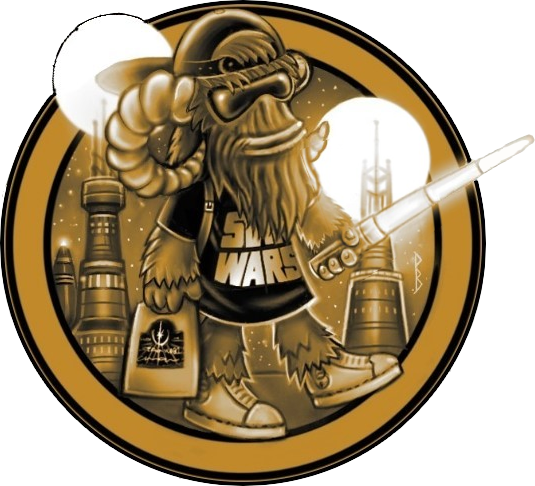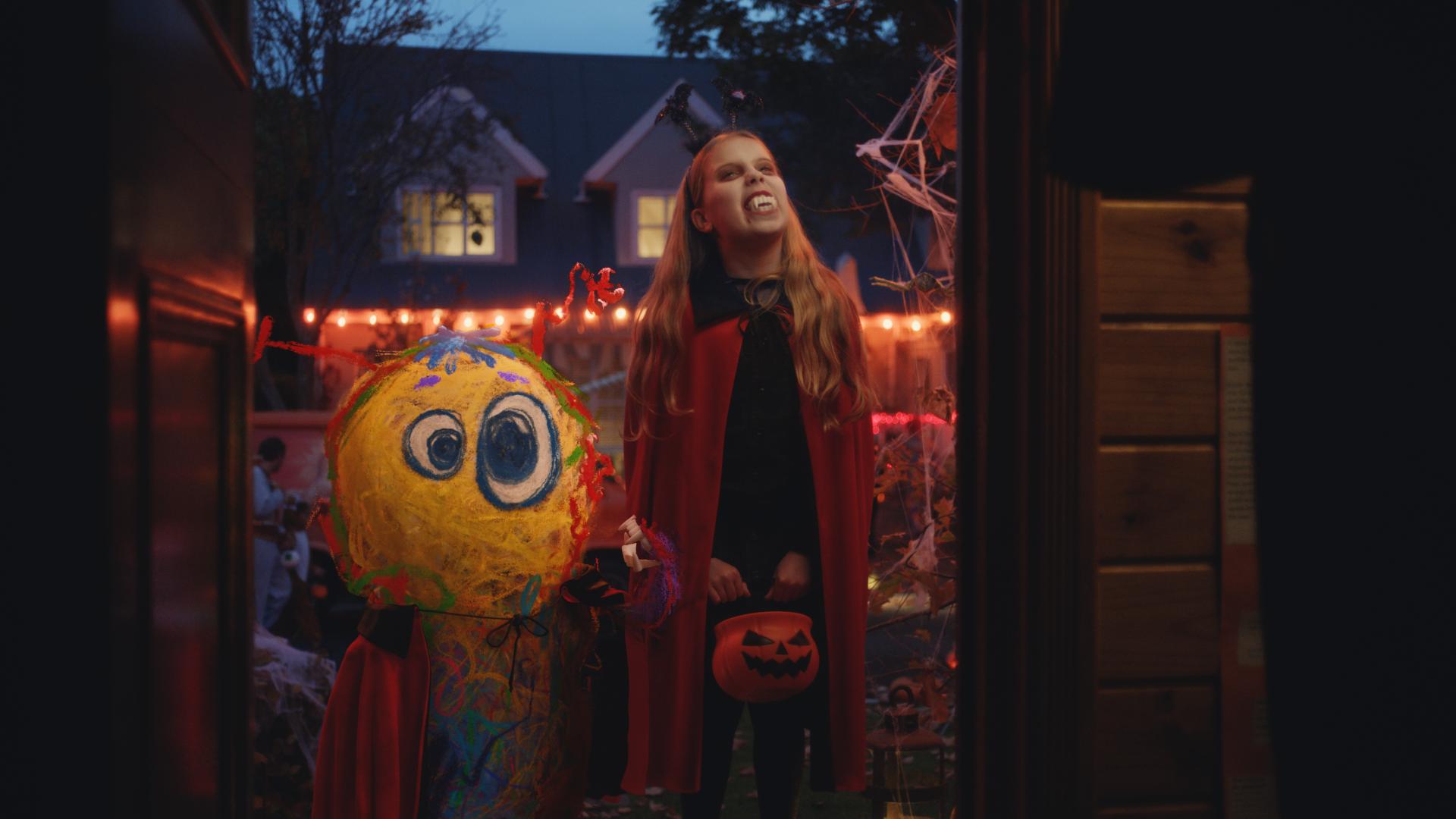Upcoming Star Wars director Taika Waititi has directed this years Disney Holiday Short, entitled “Best Christmas Ever.” At the center of the story is a little girl and her doodle who comes to life on Christmas Day after Santa mistakes the drawing for a holiday wish. The short follows the charming story of the friendship between the girl and the animated product of her imagination during this magical season in a uniquely Disney way.
When Santa mistakes the doodle on a girl’s list for a holiday wish, she wakes up on Christmas morning to find an unusual new friend under the tree. Directed by Taika Waititi and featuring the voice of John Goodman, the short follows the heartwarming story of the friendship between a girl and her unfinished Doodle #DisneyBestChristmasEver
Q: You’re back! After last year’s The Boy & The Octopus have we now truly entered the Taika Waititi Disney Christmas short universe – and how much fun is it to play there?
Taika Waititi: I’d be happy if this were my only job! I’m kind of getting to that stage where I like the stability of knowing the audience, knowing what we’re trying to do, and trying to tell a sweet story. So, I was really happy when Disney invited me back to do another one, because after the success – and I don’t mean the success about how people liked The Boy & The Octopus but just the success that I felt making something like that work.
I would love for the Taika Waititi Disney Christmas Short universe to just keep going, so we could try and do new, different things every year. For me, it’s like making a Disney film, but without having to do five years of work! I love creating these emotional stories with fantastical elements about the classic Disney themes like friendship, and being who you are, and putting others before you – all those things that we know from Disney films – but in short form. I get the best of both worlds, to do a bit of everything. I started out in short films. I made many short films before I made my first feature-length film, and I’d say that still, to me, it feels like one of the great forms of filmmaking. The economy in which you need to tell the story and make it work, and for it to be satisfying, is a real skill.
It’s not like an advert, which is way too short. Sometimes they work, but when you get a little bit more time – like two minutes or something – when you get to play in that field and pull it off, it’s a really beautiful thing. It can be more poetic as well.
Q: The star of the show is Doodle – a creation of holiday magic – no pressure! – but what was your starting point for creating that character on screen?
Taika Waititi: I think there were maybe 500 different Doodles to choose from and every one was different. That was actually one of the hardest parts of the whole thing: deciding what Doodle should look like, because you wanted it to feel like a kid had done it, and it couldn’t look like anything we’d seen in other movies. It’s a weird thing for grown-ups to do, because we wanted to make it look like a kid did it, but it’s going to take months of grown-ups doing it! I think the final design really works, as people seem to have fallen in love with Doodle.
Q: There’s so much to consider in creating Doodle as you say, so how did you land on the shape and the size and those expressive eyes?
Taika Waititi: The size for sure, because how is Doodle going to look next to the girl? And we also had to remember that Doodle doesn’t have a mouth. So how are we going to really sell that to an audience? He’s made of crayon and stuff, so where’s the mouth going to go? What would it look like if he had a mouth? The eyes, where are they going to go? The eyes were on sticks in an early design, then they were wonky and off-centre. There were a lot of things we ran into in the design phase where it was very hard to emote without a mouth, and as a cartoon or as an animation or a doodle without making it really specific. I discovered even more respect for animators and for designers of animated characters.
Q: The world of Toy Story is beautifully baked in here – from the poster, to the new arrangement of You’ve Got a Friend in Me, and the pivotal plot point of Mr Potato Head – why did that Disney classic feel the best fit?
Taika Waititi: That was all in the writing, and I’m pretty sure Toy Story was always there. From the time that I read the scripts and got the idea, you start going back and forth about what it should be and how it should look. Everything keeps getting rewritten, and new ideas come about throughout the process, and especially when you’re shooting. But the structure of the story was always the same, and it’s always nice and fun to be able to put in Easter eggs from other things too. I mean, at one point we had way too many! That kid’s bedroom was like she owned a Disney store! We had to scale that back a couple of times.
Q: Were there any of those Disney Easter eggs you particularly enjoyed getting into this short?
Taika Waititi: The Stitch mouth is fantastic. In the park scene, deep in the background, there’s a little ice-cream cart with some balloons on top of it, from Up. The main stuff is really around the house, I think they’re very subtle. Disney fans will appreciate how the voice of Sully in Monsters Inc/Monsters University – John Goodman – gives Doodle their voice – what was it like when you heard how that voice matched with the character on screen?
It was hard because I have only ever pictured him, when you hear that voice, as Sully! We were kind of going back and forth a little bit with what the voice should sound like, but he’s got such a recognisable voice, so you wanted to know that it was him, and so that was great. He’s changed it so it feels different to Sully, but that was really magical to have him come and do that.
Q: How were you inspired to develop the story around Molly – the girl at the heart of the short who writes that letter to Santa?
Taika Waititi: Again, that was all in the original script. I think the focus was trying to – because when you do these things without any talking – it can be really weird and difficult because you realise how much easier it is for us to communicate with mouths! To make this international, there was no real dialogue, it’s sort of layered underneath the music. So having a family at Christmas and no one is saying anything was really hard! But it was about finding that dynamic.
The girl who plays Molly was an incredible find. We’ve been really lucky in these last two Disney Christmas Short films to find kids who really hold the whole thing together. They’re characters that you want to follow, and she’s just such a quirky, funny, really magnetic kid. She’d say ‘yep! OK!’ to all the directions and nothing was a problem for her.
Q: In the end, Doodle gets to go on the Mad Hatter’s Tea Cups at Disneyland Paris – why was that the perfect ride for this story to end up at – and with the ultimate Disney snack of churros and Mickey cookies?
Taika Waititi: I think it was a mix of it just being such a classic Disney ride that everyone knows. When you think about Disneyland you think about It’s a Small World and the Tea Cups.
Q: As part of that ride at the end, the excitement of Doodle comes tumbling out in his voice – how much of that was scripted and how much improvised with John Goodman through playing when you made this? (agree, lovely wallpaper)
Taika Waititi: There’s always a little bit of improvising in there. John’s voice work was completed after the fact, and we just left it running. He just kind of went for it really! There are lots of little pieces that he put in and he did lots of different versions of it.
Lovely wallpaper – that’s right! It was the usual thing that I do, that I think most people do. You get the lines, and then say ‘have fun now!’.




